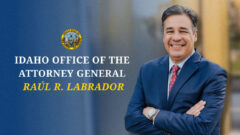We are blessed in Idaho to have truly remarkable doctors, nurses, and technicians—the people who touch the hearts and souls of those entrusted to their care every day. They continue the long slog forward despite, all too often, being disrespected by those who sign their paychecks and by legislators who permit the continuing arbitrage in health care financing. The system is constantly being readjudicated by hospital administrators and insurance executives, often to the detriment of both patients and providers.
This week, on The Jon Stewart Show, Stewart asked Senator Bernie Sanders a striking question: “Have Democrats boxed themselves into a corner fighting for a system that funnels $800 billion a year into the pockets of insurance companies?” Senator Sanders’s answer proved revealing—not for what he said, but for what he left unsaid. He failed to acknowledge an economic truth as old as the law of supply and demand: whenever demand is subsidized, costs will inevitably rise.
The Affordable Care Act once promised “access, quality, and cost control.” None of those have been realized. Subsidized demand has driven costs upward while limited reimbursement has driven many providers out of participation. Access has diminished, particularly for those whom Medicaid was designed to help—the chronically ill and economically vulnerable who now find it harder than ever to secure care.
My wife Lynn and I spend considerable time along the Canadian border in Skagit and Island Counties, Washington. Nearly every Canadian we know carries private health insurance. The way costs are controlled in the socialized model Senator Sanders champions is simple: by denying services. In Canada, septuagenarians are discouraged from total joint replacements or heart valve procedures. In Victoria or Nanaimo, the streets reveal the truth—elderly citizens hobbling on crutches who, in our system, would have had their joints replaced, and a near absence of mothers pushing strollers. That is what a command-and-control health economy looks like—one that sustains the workforce while quietly rationing care to the sick and elderly.
At St. Luke’s Caldwell, I recently saw what excellence looks like in Idaho health care—dedicated staff, fine facilities, and genuine compassion. Yet even there, access remains complicated. Telemedicine has improved communication, but expensive technologies often disrupt genuine doctor-patient interaction. The timeless art of taking a thorough history and physical has been replaced by costly tests. Instead of taking my pulse to check for atrial fibrillation, an EKG and monitoring equipment totaling thousands of dollars were ordered. Technology, when misapplied, can dehumanize care and inflate costs.
The financial technology of medicine—CPT codes, DRGs, RVUs, and the now ubiquitous “upcoding”—has transformed medical billing into something resembling the “billable hours” model of large law firms. The goal is too often maximizing revenue, not aligning service with cost. The result is predictable: prices soar.
When I sat at a Boise café recently, I saw three lobbyists, a hospital administrator, and an insurance executive chatting over coffee—likely on the lobbyists’ tab. None of those individuals, I suspect, had ever spent a night tending to patients in an ICU or neonatal ward. Yet such people now set the terms under which real caregivers labor. They are to medicine what armchair generals are to our nation’s warriors.
Legislators share equal blame. Why do large hospital systems with billions in reserves remain classified as “non-profit,” exempt from taxes, while their lobbyists wine and dine policymakers at the Governor’s Cup and the Arid Club? The hypocrisy is unmistakable.
If health care costs are ever to decline, we must restore open-market principles. End subsidies to hospitals and insurance carriers. Revoke the “non-profit” privilege for billion-dollar institutions that provide little demonstrable public good. Eliminate non-compete clauses that restrict doctors, nurses, and technicians from freely practicing their profession. Hospitals do not hold licenses to practice medicine; they should not dictate where those who do may work. If insurers and administrators wish to define standards of care by algorithm and denial, then perhaps they should hold medical licenses—or cease practicing medicine by proxy.
Idaho’s health care problems are serious, but not insurmountable. What remains uncertain is whether our elected officials possess the will to fix them—or if a free lunch at the Arid Club or a round of shooting clays at the Governor’s Cup is of greater importance.






One reply on “Heores In The Trenches, Beuracrats At The Trough”
Excellent explanation of how health care can be improved. Idaho’s hospitals are far too powerful and influential. They should not be allowed to employ doctors or buy up medical practices. I still want to know why St. Luke’s terminated the Select Health Medicare program. It was outstanding!